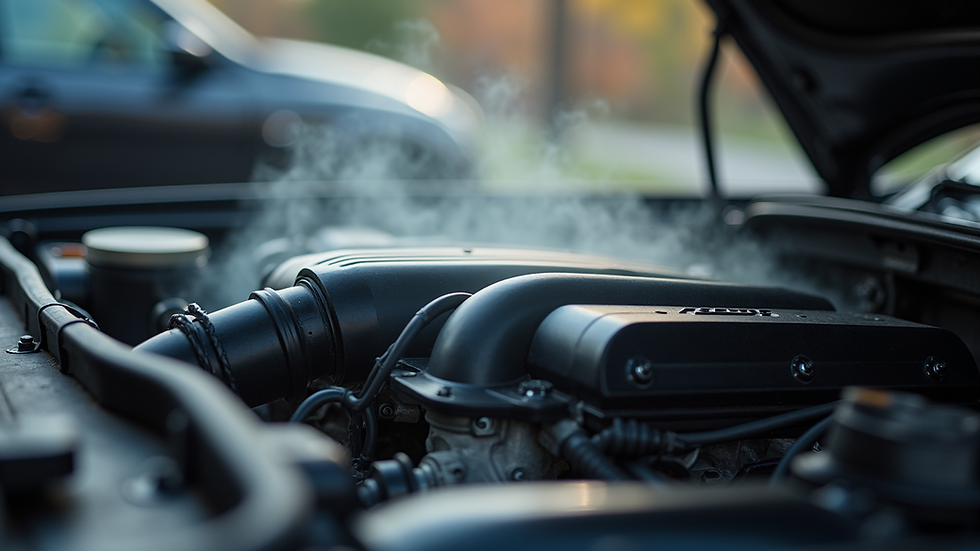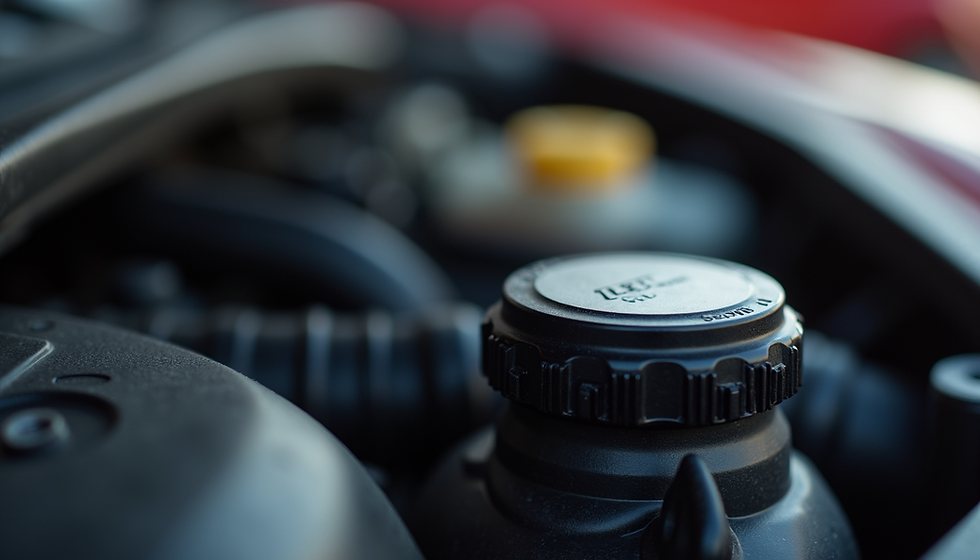Practical Solutions for Overheating Cars
- Barossa Radiators & AutoCare
- Nov 10
- 4 min read
Car overheating is a common problem that can cause serious damage if not addressed quickly. I have dealt with many vehicles that overheat, and I know how important it is to fix the issue before it worsens. This guide will help you understand why your car overheats and what you can do to fix it. I will share practical steps you can take to keep your car running cool and safe.
Identify the Signs to Fix Overheating Car Early
You must recognize the signs of an overheating car early to prevent damage. The most obvious sign is the temperature gauge rising above the normal range. You might also see steam coming from under the bonnet or smell a sweet, syrupy scent from leaking coolant. Your engine may start to lose power or run roughly.
If you notice any of these signs, stop driving immediately. Turn off the engine and let it cool down before checking under the bonnet. Opening the radiator cap while the engine is hot can cause burns, so wait at least 30 minutes.
Common signs of overheating:
Temperature gauge in the red zone
Steam or smoke from the engine bay
Coolant leaks or puddles under the car
Sweet smell from coolant
Engine running rough or losing power

Check and Maintain Your Cooling System to Fix Overheating Car
The cooling system is the heart of preventing overheating. It includes the radiator, coolant, water pump, thermostat, and hoses. You need to inspect these parts regularly and maintain them properly.
Start by checking the coolant level. Low coolant is a common cause of overheating. Top it up with the correct type of coolant recommended in your vehicle’s manual. Avoid mixing different types of coolant.
Inspect the radiator for any blockages or damage. Dirt, leaves, or bugs can block airflow and reduce cooling efficiency. Clean the radiator fins gently with a soft brush or compressed air.
Check the radiator hoses for cracks, leaks, or softness. Replace any damaged hoses immediately. Also, test the thermostat by observing if the engine reaches and maintains the correct operating temperature. A faulty thermostat can cause overheating by not opening to allow coolant flow.
Finally, ensure the water pump is working well. It circulates coolant through the engine and radiator. If you hear a whining noise or see coolant leaks near the pump, have it inspected and replaced if necessary.

Use Professional Services for Reliable Overheating Car Solutions
Sometimes, DIY checks are not enough. You need expert help to diagnose and fix complex cooling system issues. I recommend using professional services for reliable and lasting overheating car solutions.
A trusted auto care centre can perform a full cooling system inspection. They can pressure test the radiator, flush old coolant, replace faulty parts, and check for hidden leaks. They also have the right tools and experience to handle modern vehicle cooling systems.
If you want to avoid repeated overheating problems, book a service with a specialist. For example, Barossa Radiators & AutoCare offers expert cooling system repairs and maintenance. They ensure your car runs smoothly and safely, especially in hot weather or heavy traffic.
Prevent Overheating with Simple Driving and Maintenance Habits
You can prevent many overheating issues by adopting good driving and maintenance habits. Here are some practical tips:
Avoid heavy traffic and stop-start driving when possible. These conditions increase engine temperature.
Park in shaded areas to reduce heat buildup inside the engine bay.
Check coolant levels monthly and top up as needed.
Inspect belts and hoses regularly for wear and tear.
Flush the cooling system every 12 months or as recommended by your vehicle manufacturer.
Use the correct coolant type and mixture ratio.
Turn off the air conditioning if the engine temperature rises too high.
Drive at moderate speeds on hot days to reduce engine strain.
Following these steps will help you avoid overheating and extend your car’s life.
What to Do If Your Car Overheats While Driving
If your car overheats while you are driving, act quickly to prevent damage. Here is what you should do:
Pull over safely and turn off the engine.
Open the bonnet carefully to let heat escape.
Wait at least 30 minutes before checking the coolant level.
If the coolant is low, add water or coolant if you have it.
Do not remove the radiator cap while the engine is hot.
Call for roadside assistance if you cannot fix the problem.
Avoid driving the car until the issue is resolved.
Taking these steps can save your engine from severe damage and costly repairs.
Keep Your Vehicle Cool and Running Smoothly
Fixing an overheating car requires attention to detail and regular maintenance. By checking your cooling system, using professional services, and adopting good habits, you can keep your vehicle cool and running smoothly.
If you want expert help, consider contacting Barossa Radiators & AutoCare. They provide comprehensive cooling system services and general car maintenance to keep your vehicle safe on the road.
Stay proactive and address overheating issues early. Your car will thank you with reliable performance and fewer breakdowns.
.png)



Comments